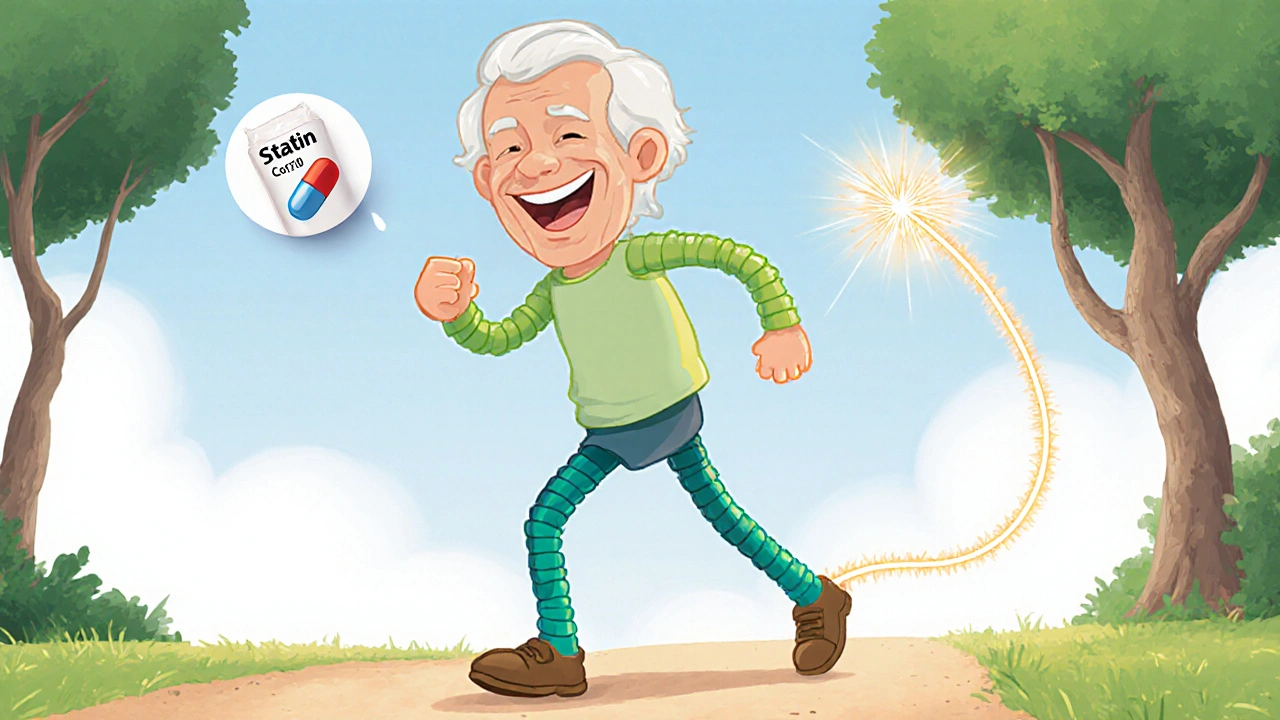Exercise with Statins: What You Need to Know About Safety and Side Effects
When you take statins, cholesterol-lowering drugs commonly prescribed to reduce heart attack and stroke risk. Also known as HMG-CoA reductase inhibitors, they help keep your arteries clear—but they can also cause muscle pain, fatigue, or weakness, especially when combined with exercise, physical activity that increases muscle demand and blood flow. Many people wonder if they should stop working out. The answer isn’t simple. For most, staying active is still the best choice—but how you move matters.
Statins work by blocking an enzyme your liver uses to make cholesterol. But that same enzyme is also involved in producing energy for your muscles. When you exercise, your muscles need more energy. If statins cut that supply too much, you might feel sore, tired, or even experience cramps. This isn’t always dangerous, but it can be a warning sign. If your muscle pain is severe, comes with dark urine, or doesn’t go away after a few days, you could be developing a rare but serious condition called rhabdomyolysis. It’s rare, but it’s why doctors check your CK levels before and during statin therapy. The key isn’t to avoid exercise—it’s to start slow, listen to your body, and avoid sudden spikes in intensity. A daily walk, light cycling, or swimming often works better than weekend warrior workouts.
Some people think natural remedies or supplements can fix statin side effects. But things like coenzyme Q10, vitamin D, or even high-dose magnesium? The science is mixed. A few small studies show slight relief, but nothing reliable enough to recommend as a fix. What actually helps? Consistency. Moving regularly at a moderate pace trains your muscles to adapt. It also improves how your body handles statins over time. If you’re on statins and you’re not active, you’re missing out on one of the most powerful tools for heart health. Don’t let fear stop you—but don’t ignore warning signs either. Talk to your doctor about your routine. They can adjust your dose, check for other causes of muscle pain, or suggest safer alternatives like ezetimibe if needed.
What you’ll find in the posts below are real, practical stories and science-backed tips from people who’ve walked this path. From how to tell if your muscle pain is normal or serious, to which types of exercise are safest, to what supplements might actually help (and which ones to avoid), this collection cuts through the noise. You’ll see how others managed side effects without quitting their routines—and how to avoid common mistakes that lead to hospital visits. This isn’t about avoiding statins. It’s about using them safely, wisely, and with movement that actually helps you live longer, not just survive.

Statins and Exercise-Induced Muscle Injury: Prevention Tips
Haig Sandavol Nov 13 10Learn how to exercise safely while taking statins. Discover science-backed tips to prevent muscle pain, which statins are gentler on muscles, and how to stay active without risking injury.
More Detail